- National symbols in India depict the rich heritage of its socio-cultural contents that are unique to Indian subcontinent from the rest of the world. National symbols of India create the entity of the whole nation, highlighting the pride and prestige.
- These symbols are intrinsic to the Indian identity and heritage. They represent the identifiable features that make it exclusive and support the nation to remain distinctive and unique from the rest of the world.
- Indians of all demographics backgrounds across the world are proud of these National Symbols as they infuse a sense of pride and patriotism in every Indian’s heart.
National Flag
- The National flag is a horizontal tri-colour of deep saffron (kesari) at the top, white in the middle and dark green at the bottom in equal proportion.
- The saffron stands for courage, sacrifice and the spirit of renunciation; the white stands for purity and truth and the green for faith and fertility.
- The ratio of width of the flag to its length is two to three. In the centre of the white band is a navy blue wheel which has 24 equally spaced spokes. Its diameter approximates the width of the white band. Its design is taken from that of the wheel which appears on the abacus of the Lion Capital of Ashoka at Sarnath.
- The design of the national flag was adopted by the Constituent Assembly of India on 22 July 1947.
- The Flag Code of India, 2002, has taken effect from 26 January 2002 to bring together all such laws, conventions, practices and instructions for the guidance and benefit of all concerned.

State Emblem
- The state emblem depicts four lions, standing back to back. It is an adaptation from the Sarnath Lion Capital of Ashoka, near Varanasi in Uttar Pradesh. Carved out of a single block of polished sandstone, the capital is crowned by the Wheel of the Law (Dharma Chakra).
- In the State emblem, adopted by the Government of India on 26 January 1950, only three lions are visible, the fourth being hidden from view.
- The four lions symbolizing power, courage and confidence, rest on a circular abacus. The abacus is girdled by four smaller animals guardians of the four directions: the lion of the north, the elephant of the east, the horse of the south and the bull of the west. The abacus rests on a lotus in full bloom, exemplifying the fountainhead of life and creative inspiration.
- The words Satyameva Jayate (meaning ‘truth alone tirumphs’) from Mundaka Upanishad are inscribed below the abacus in Devanagari script.
- The use of the state emblem of India, as the official seal of the Government of India, is regulated by the State Emblem of India (Prohibition of Improper Use) Act, 2005.

National Anthem
- Jana-gana-mana, composed originally in Bengali by Rabindranath Tagore, was adopted in its Hindi version by the Constituent Assembly as the national anthem of India on Tuesday, 24 January 1950.
- Playing time of the full version of the National Anthem is approximately 52 seconds. A short version consisting of the first and last lines of the stanza (playing time approximately 20 seconds) is also played on certain occasions.
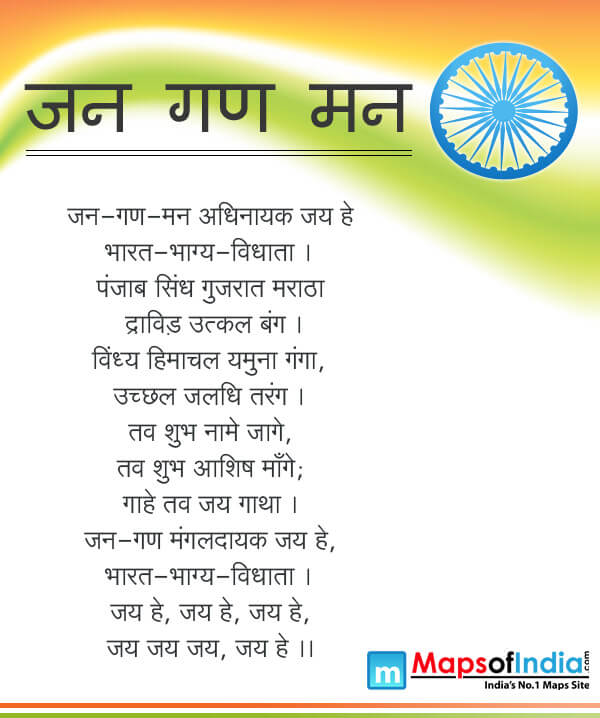
National Song
- The song Vande Mataram, composed in Sanskrit by Bankimchandra Chatterji, was incorporated in his famous novel Ananda Math (1882). It has an equal status with the National Anthem.
- Later the song was set to tune by Rabindranath Tagore and sung for the first time at the annual session of the Indian National Congress held in 1896 in Calcutta.
- It was declared as the National Song in 1937 through a resolution. The English translation of the stanza was rendered by Sri Aurobindo.
- It has an equal status with Jana-gana-mana. On January 24, 1950, the President, Dr. Rajendra Prasad came up with a statement in the Constituent Assembly, “the song Vande Mataram, which has played a historic part in the struggle for Indian freedom, shall be honoured equally with Jana Gana Mana and shall have equal status with it.”

National Calendar
- The National Calendar is based on the Saka Era with Chaitra being its first month.
- It consists of 365 days in a normal year. It was adopted from 22nd March 1957 along with the Gregorian calendar for the following official purposes:
- (i) Gazette of India;
- (ii) news broadcast by All India Radio;
- (iii) calendars issued by Government of India;
- (iv) Government communications addressed to the members of the public.
- Dates of the National Calendar correspond with those of the Greogrian Calendar. Thus, the first day of Chaitra corresponds to 22nd March in a normal year and 21 March in a leap year.
National Animal
- The Tiger (Panthera tigris) is the national animal of India. It is a rich-colored well-striped animal with a short coat. The combination of grace, strength, power has earned the tiger great respect and high esteem.
- Out of eight races of the species known, the Indian race, the Royal Bengal Tiger, is found throughout the country except in the north-western region and also in the neighbouring countries, Nepal, Bhutan and Bangladesh.
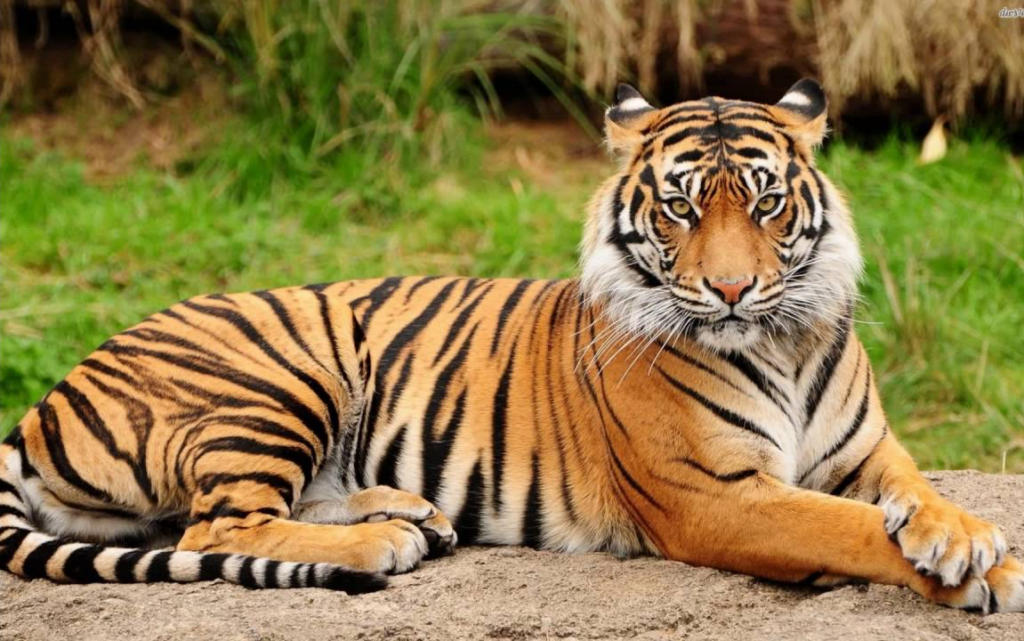
National Bird
- The Indian Peacock, Pavo cristatus, the national bird of India, is a colourful, swansized bird, with a fan-shaped crest of feathers, a white patch under the eye and a long, slender neck.
- The male of the species is more colourful than the female, with a glistening blue breast and neck and a spectacular bronze-green trail of around 200 elongated feathers. The female is brownish, slightly smaller than the male and lacks the trail.
- The elaborate courtship dance of the male, fanning out the tail and preening its feathers is a gorgeous sight.
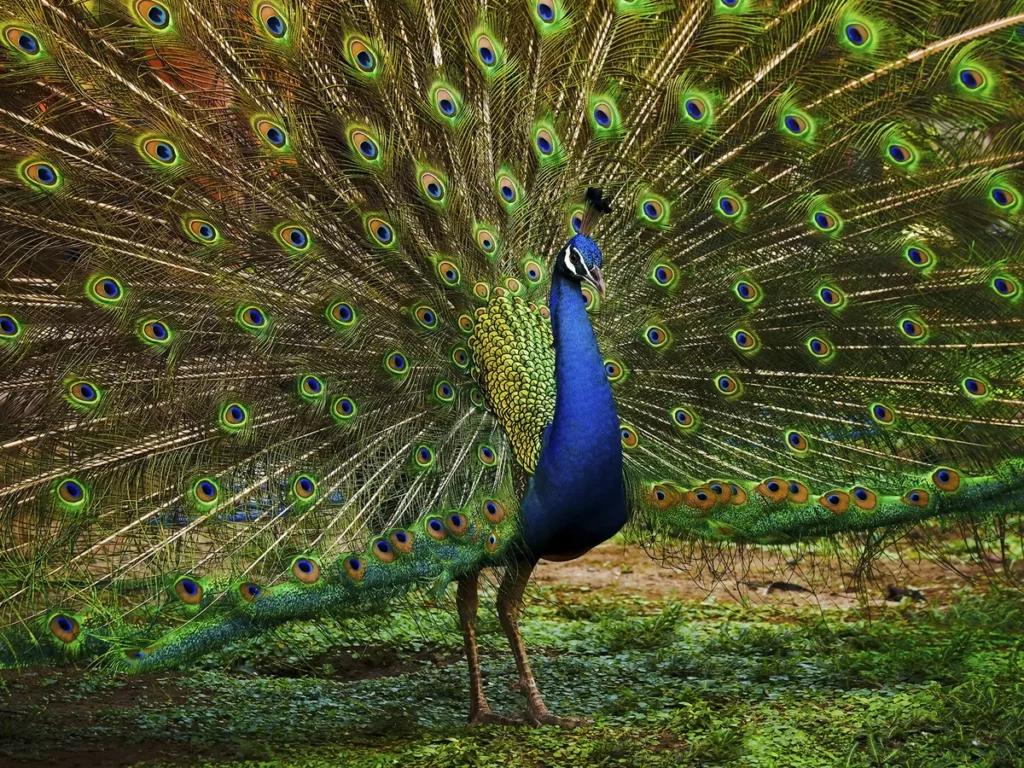
National Flower
- Lotus or waterlily is an acquatic plant of Nymphaea with broad flaoting leaves and bright fragrant flowers that grow only in shallow waters.
- It is a sacred flower and occupies a unique position in the art and mythology of ancient India and has been an auspicious symbol of Indian culture since time immemorial.
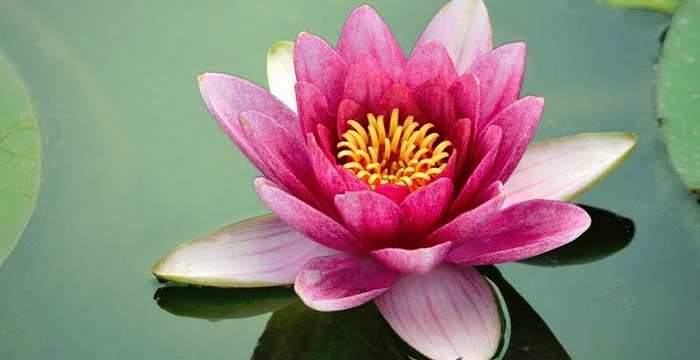
National Fruit
- Mango (Manigifera indica) is the National fruit of India. Mango is one of the most widely grown fruits of the tropical countries.
- In India, mango is cultivated almost in all parts, with the exception of hilly areas. Mangoes have been cultivated in India from time immemorial. The poet Kalidasa sang of its praises. Alexander savoured its taste, as did the Chinese pilgrim Hieun Tsang. Akbar planted 100,000 mango trees in Darbhanga, known as Lakhi Bagh.
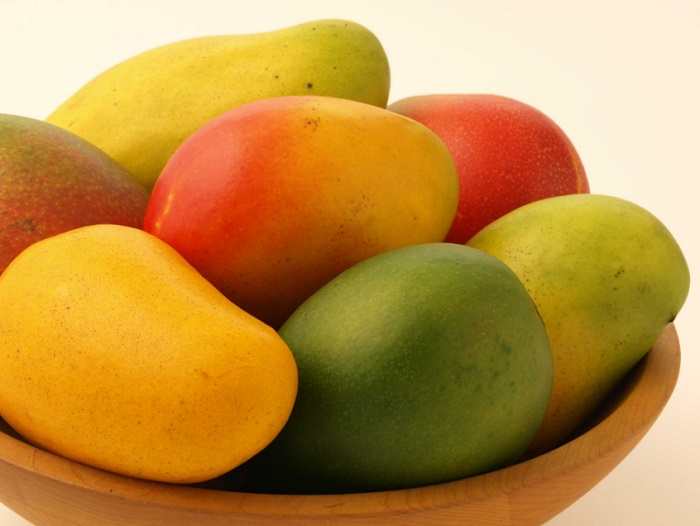
National Tree
- The Banyan tree (Ficus benghalensis) is the National Tree of India.
- This huge tree towers over its neighbours and has the widest reaching roots of all known trees, easily covering several acres.
- It sends off new shoots from its roots, so that one tree is really a tangle of branches, roots, and trunks.
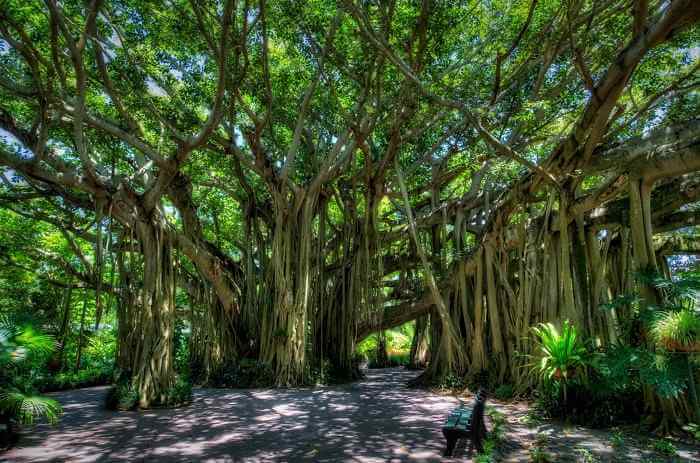
National Aquatic Animal
- The Gangetic Dolphin (Platanista gangetica) is the National aquatic animal of India.
- The Ganges river dolphin is primarily found in the Ganges and Brahmaputra Rivers.
- Gangatic Dolphin is said to represent the purity of the holy Ganga as it can only survive in pure and fresh water.
- It is listed by the IUCN as endangered on their Red List of Threatened Species.

National Currency Symbol
- The symbol is an amalgam of Devanagari “Ra” and the Roman Capital “R” with two parallel horizontal stripes running at the top representing the national flag and also the “equal to” sign.
- The Indian Rupee sign was adopted by the Government of India on 15th July, 2010.
- The symbol of Indian Rupee signifies India’s international identity for money transactions and economic strength.
- The symbol, conceptualised and designed by Udaya Kumar, a post graduate in Design from Indian Institute of Technology Bombay, has been chosen from thousands of concept entries received by the Ministry of Finance through an open competition among resident Indian nationals.

National Heritage Animal
- The Indian elephant (Elephas maximus indicus) has been declared as the national heritage animal by the government in order to conserve its dwindling population.
- 60% of the Asian elephants live in India. There are over 25,000 elephants in the country, including 3,500 in captivity in zoos and temples – particularly in southern and north-eastern parts of the country.
- Indian Elephant has been listed as endangered by IUCN as the population has declined by at least 50% over the last three generations.
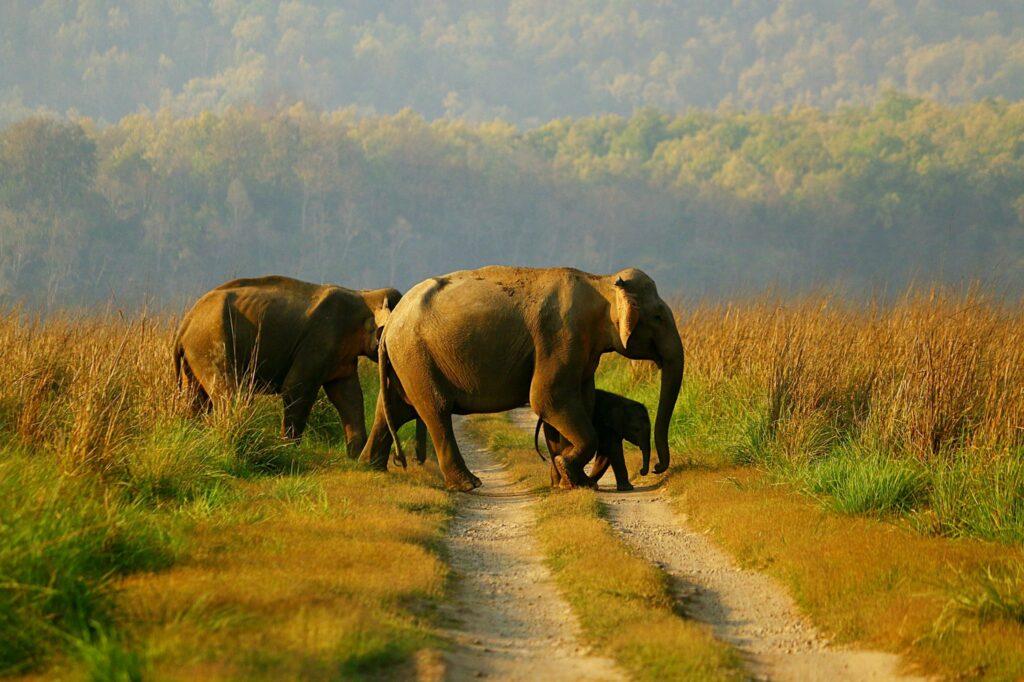
National Game
- The Ministry of Youth Affairs & Sports of India clarified that, officially, the country does not have a national game; no game, including hockey, has been notified as such.
